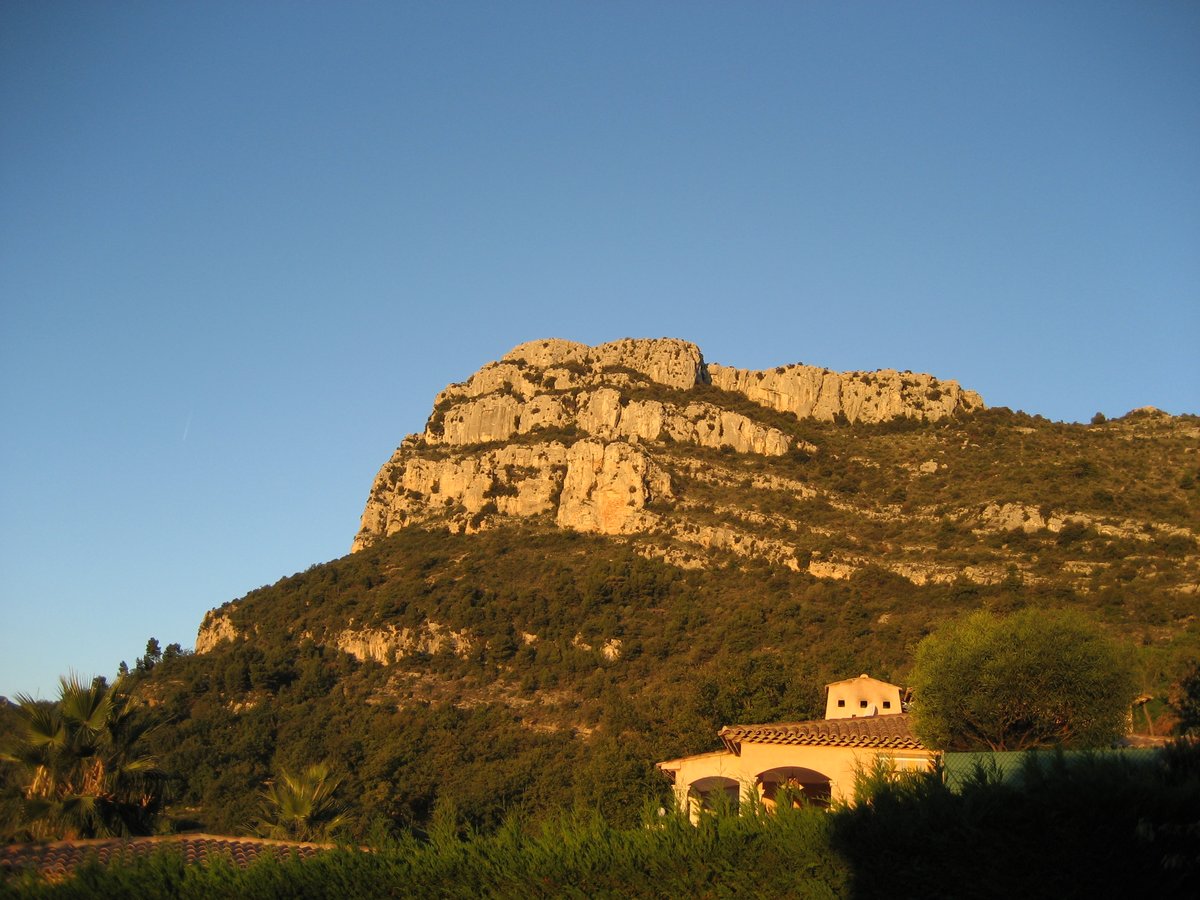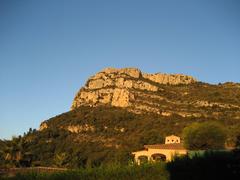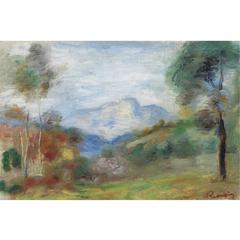
Visiting Baou de Saint-Jeannet: Hours, Tickets, and Tips
Date: 31/07/2024
Introduction
Baou de Saint-Jeannet, a striking limestone cliff located in Saint-Jeannet, France, is a site of immense natural beauty and historical significance. This comprehensive guide covers everything from its rich history to practical visiting tips, making it an indispensable resource for anyone planning a visit. The Baou de Saint-Jeannet has been a focal point of human activity since prehistoric times, with archaeological findings dating back to the Bronze Age and Iron Age (Wikipedia). Over the centuries, it has served various roles—from a fortified village during the Middle Ages to an agricultural hub in the 13th century (Marc Chagall, Wikipedia). Today, it is not only a haven for hikers and climbers but also a source of artistic inspiration, most notably for Marc Chagall (Marc Chagall). Additionally, its inclusion in the Parc Naturel Régional des Préalpes d’Azur and the Natura 2000 network underscores its environmental importance (Wikipedia). Whether you’re interested in its historical roots or its modern-day attractions, this guide provides all the information you need for a memorable visit.
Table of Contents
Exploring Baou de Saint-Jeannet: History, Tickets, and Visitor Tips
Historical Significance
Ancient Occupation and Archaeological Findings
The Baou de Saint-Jeannet has been a site of human activity since prehistoric times. Archaeological evidence indicates that the area was occupied during the Bronze Age and Iron Age. Notable findings include tools and jewelry, which suggest a non-Romanized settlement in the region (Wikipedia). These artifacts provide a glimpse into the early human activities and the cultural practices of the inhabitants.
Medieval Era and Defensive Structures
During the Middle Ages, the village of Saint-Jeannet, located at the foot of the Baou, was fortified to protect against marauding Saracen pirates. The village’s defensive architecture includes a church tower that resembles a fortress, reflecting the need for protection and the strategic importance of the location (Marc Chagall). The fortified nature of the village made it a safe haven for its inhabitants during turbulent times.
Seigneurial Fief and Agricultural Practices
In the 13th century, the area around Baou de Saint-Jeannet was part of a seigneurial fief known as the Bergerie du Castellet. Historical records from the commune of Saint-Jeannet document the exploitation of the Castellet forest and the regulations governing it. These records highlight the agricultural and pastoral activities that were central to the local economy (Wikipedia).
Modern and Contemporary Periods
The 18th century saw the continuation of agropastoral activities in the region. The Jas de Barrière, consisting of a sheepfold and a threshing area, is a testament to these practices. The well-preserved dry stone enclosures and walls from this period illustrate the traditional methods of land use and animal husbandry that have been maintained over centuries (Wikipedia).
Artistic Inspiration and Cultural Impact
The Baou de Saint-Jeannet has also been a source of inspiration for artists, most notably Marc Chagall. Chagall stayed in the area in 1949 and later moved to Vence, where he frequently depicted the Baou in his works. His painting “La Baou de Saint-Jeannet” from 1969 captures the characteristic outline of the mountain and the village, reflecting the dramatic and picturesque landscape that has captivated many artists (Marc Chagall).
Environmental Protection and Modern Significance
Today, the Baou de Saint-Jeannet is part of the Parc Naturel Régional des Préalpes d’Azur and is included in the Natura 2000 network, which aims to protect the region’s unique biodiversity. The area is also designated as a ZNIEFF (Zone Naturelle d’Intérêt Écologique, Faunistique et Floristique), highlighting its ecological importance (Wikipedia).
Visitor Information
Hiking and Climbing Heritage
The Baou de Saint-Jeannet is renowned for its hiking and climbing opportunities. It has been a cradle of modern climbing, attracting enthusiasts from around the world. The mountain’s steep cliffs and challenging routes have made it a popular destination for climbers (Outdooractive).
Local Legends and Folklore
Local legends add to the historical allure of the Baou de Saint-Jeannet. One such legend involves the old castle ruin of Le Castellet, where it is said that gold is hidden within the walls. These stories, passed down through generations, enrich the cultural tapestry of the region and attract visitors intrigued by the area’s mysterious past (CityXee).
Architectural and Historical Sites
At the foot of the Baou, visitors can find the 15th-century chapel Notre-Dame des Baous, also known as Notre-Dame des Champs. This small church, along with the nearby Saint-Michel caves, which show signs of historical human use, adds to the historical significance of the area. The plateau at the summit of the Baou features dry stone constructions used for agricultural, pastoral, and apicultural purposes, further illustrating the historical land use practices (Wikipedia).
Tickets and Visiting Hours
Visitors can explore the Baou de Saint-Jeannet year-round. While there is no admission fee to access the natural site, guided tours and special events may have associated costs. It is advisable to check the official website or local tourism office for updated information on visiting hours and ticket prices for guided tours.
Travel Tips and Nearby Attractions
- Getting There: The Baou de Saint-Jeannet is easily accessible by car and public transport. Ample parking is available near the trailheads.
- What to Bring: Comfortable hiking shoes, water, and a camera to capture the stunning views.
- Nearby Attractions: While in the area, consider visiting the village of Saint-Jeannet, the medieval town of Vence, and the Marc Chagall National Museum.
- Accessibility: Some trails may be challenging for those with mobility issues. It’s best to review trail difficulty before planning your visit.
Conclusion
The Baou de Saint-Jeannet is not only a natural landmark but also a site rich in historical significance. From ancient settlements and medieval fortifications to modern climbing routes and artistic inspirations, the Baou has played a vital role in the cultural and historical narrative of the region. Its preservation as part of protected environmental areas ensures that its historical and natural heritage will continue to be appreciated by future generations. For a memorable visit, be sure to check the latest information on visiting hours and guided tours, and take advantage of the diverse activities and attractions in the area.
FAQ
- What are the visiting hours for Baou de Saint-Jeannet? The site is open year-round, but it’s best to check the local tourism office for specific details.
- Are there any ticket prices for visiting Baou de Saint-Jeannet? There is no admission fee for the natural site, but guided tours and special events may have associated costs.
- What should I bring for a visit to Baou de Saint-Jeannet? Comfortable hiking shoes, water, and a camera are recommended.
- Is Baou de Saint-Jeannet accessible for people with mobility issues? Some trails may be challenging, so it’s best to review trail difficulty before planning your visit.
- What nearby attractions can I visit? Consider exploring the village of Saint-Jeannet, the medieval town of Vence, and the Marc Chagall National Museum.
For more updates and tips, follow us on social media or download our mobile app Audiala.


